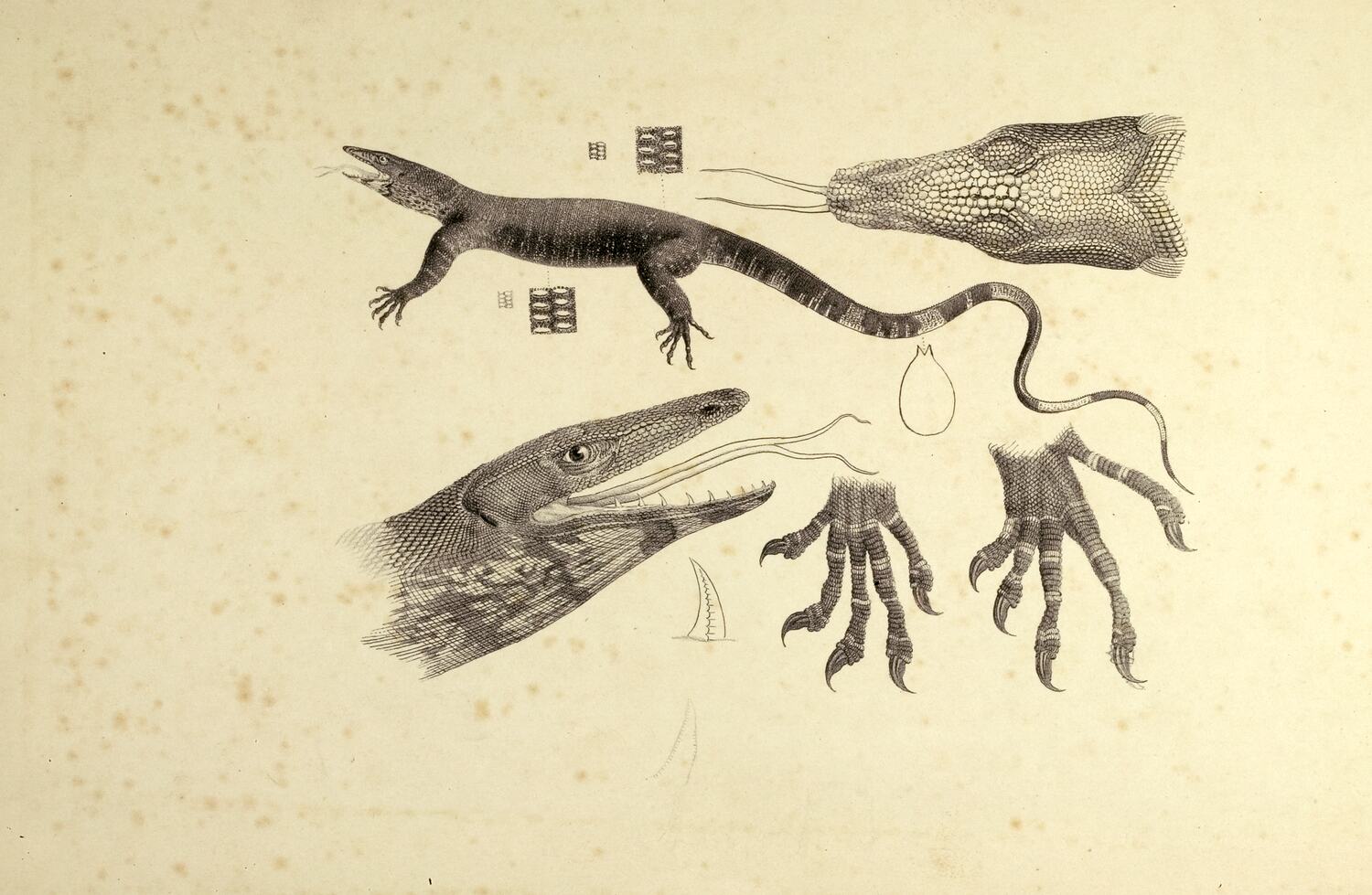Lace Monitor, Varanus varius
Plate 41. The Lace Lizard, Hydrosaurus varius (now known as the Lace Monitor, Varanus varius)
This is by far the largest of the Victorian Lizards, sometimes reaching 6 feet in length, and from its fierce, bloodthirsty disposition is a most unwelcome visitor to the poultry yards, from which it occasionally carries off the chickens. Its usual food is the common Opossum, and various smaller mammals and birds. It is often popularly called Iguana by the settlers, but the English name originally given by Shaw is more desirable, as there is no near affinity with the herbivorous true Iguana, in which the body has a dorsal crest, a dilatable throat, a thick, wide, slightly notched tongue, imbricated body scales, and different maxillaries and dentition.
The color varies greatly, being different in every individual in the relative proportion of the yellow and the black. Our figure and description indicate the commonest marking, but in some even the usual strong, transverse, black bands on the throat are absent.
Although the present Lace Lizard is generally arboreal, climbing the forest trees with ease, and running well on the ground, it can swim nearly as well as a crocodile; and, from being thus seen in some of the Gippsland rivers, the idea had arisen that there are Crocodiles in that part of the colony. None of the family Crocodilidœ, however occur in Victoria; the large claws on all the toes, and absence of webs between the toes of the hind feet, as well as the slender tongue, and the absence of large, bony plates on the back, easily distinguish the Lizards of the present family from those of the Crocodilidæ, or true Crocodiles.
